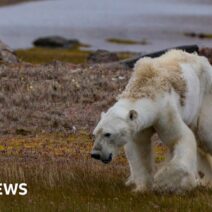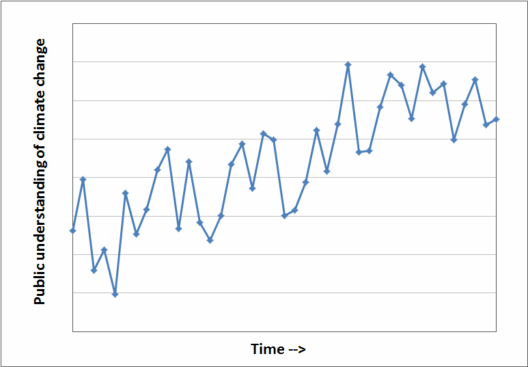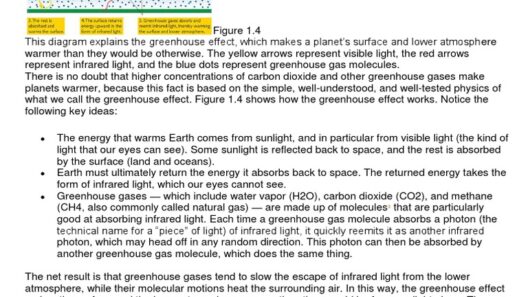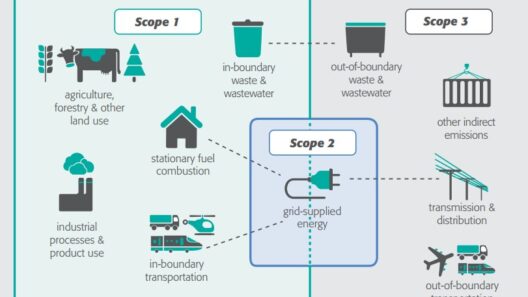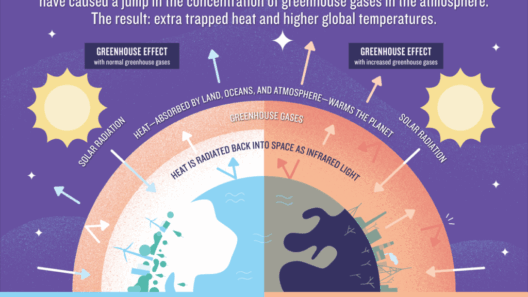The greenhouse effect is a natural phenomenon that has been an essential component of the earth’s climate system for eons. It is an intricate process that involves the trapping of heat in the atmosphere, primarily by greenhouse gases (GHGs) such as carbon dioxide, methane, and nitrous oxide. However, the intensification of this effect due to anthropogenic activities raises significant concerns regarding the sustainability of our planet. Understanding the implications of an excessive greenhouse effect is crucial as it threatens both ecosystems and human livelihoods.
As we delve deeper into the ramifications of this phenomenon, it is imperative to re-evaluate our relationship with energy consumption, industrial practices, and environmental stewardship.
The Alarming Acceleration of Climate Change
One of the most pressing dangers posed by an exaggerated greenhouse effect is the rapid acceleration of climate change. Greenhouse gases accumulate in the atmosphere, leading to a rise in global temperatures. This increase triggers a cascade of extreme weather events, ranging from ceaseless heatwaves to unprecedented storms. The unpredictability of weather patterns resulting from climate change disrupts agriculture, endangers food security, and poses significant risks to economies worldwide.
These climatic extremes are not mere statistical anomalies; they have tangible consequences. Droughts can decimate crops, while floods can inundate entire communities. As regions grapple with varying climate impacts, migration patterns will inevitably shift. People will be compelled to abandon their homes in search of more stable environments, thereby spawning socio-economic strains and potential geopolitical conflicts. The intersection of climate change and human displacement underscores a dire need for adaptation strategies that are both humane and sustainable.
Additionally, the increase in global temperatures is linked with the melting of polar ice caps and glaciers. This phenomenon contributes to rising sea levels, which imperil coastal communities and ecosystems. Low-lying islands and coastal cities face existential threats that could result in the loss of territory and cultural heritage. The scientific community underscores the urgency of mitigating these outcomes to preserve both human and ecological resilience.
The Biodiversity Crisis: Nature’s Fragile Balance
The greenhouse effect, when left unchecked, not only jeopardizes human existence but also threatens the delicate balance of biodiversity. Ecosystems are intricate webs of relationships among organisms, and the repercussions of climate-induced changes can be catastrophic. Altered temperature and precipitation patterns disrupt the habitats of countless species, making survival challenging for many.
Species extinctions have become more frequent as organisms struggle to adapt to the accelerating pace of environmental change. Coral reefs, often referred to as the “rainforests of the sea,” exemplify this alarming trend. Rising ocean temperatures and acidification, driven by increased CO2 levels, result in coral bleaching, significantly affecting marine life and the livelihoods reliant on healthy reef systems. The loss of biodiversity diminishes ecosystem resilience, weakening nature’s ability to recover from disturbances and compounding the risks faced by both wildlife and humans.
The interdependence of species within ecosystems is something that we cannot afford to overlook. As certain species disappear, others may flourish in their absence, leading to a proliferation of pests and invasive species. Such situations can destabilize entire ecosystems, which in turn can affect agricultural productivity and the stability of food chains. The cascading effects of biodiversity loss serve as a stark reminder of our intricate connection with nature and the urgent need to protect it.
Health Hazards: The Human Cost of Climate Disruption
Perhaps one of the most insidious consequences of the excessive greenhouse effect is the profound impact on public health. With rising temperatures, the optimal conditions for the proliferation of vector-borne illnesses, such as malaria and dengue fever, become more prevalent. Changing climate conditions create favorable environments for disease-carrying organisms, threatening populations with potentially devastating health crises.
Air quality degradation is another critical concern linked to climate change. The accumulation of pollutants and the resultant smog exacerbates respiratory conditions such as asthma and chronic obstructive pulmonary disease. Vulnerable populations, including children and the elderly, bear the brunt of these health risks, often lacking the resources necessary to seek adequate care. Furthermore, mental health issues related to climate anxiety have emerged, as communities grapple with the looming uncertainties of a climate-altered future.
Access to clean water is increasingly compromised as climate change affects precipitation patterns, leading to prolonged droughts and water scarcity. When potable water becomes a luxury, the ramifications stretch beyond individual health, impacting sanitation and exacerbating social inequalities. The intersection of environmental degradation and public health illuminates the urgency of addressing climate issues holistically.
Charting a Sustainable Future: Collective Responsibility
Recognizing the multifaceted risks associated with an excessive greenhouse effect requires a collective reimagining of our approach to climate policies, energy systems, and consumption patterns. Transitioning to renewable energy sources, enhancing energy efficiency, and advocating for sustainable practices can significantly reduce greenhouse gas emissions. The global community must unite in tackling these challenges, implementing systemic changes that prioritize environmental stewardship.
Innovation will play a crucial role in forging a sustainable future. Investment in green technologies, reforestation efforts, and the promotion of sustainable agriculture will be essential in restoring balance to our ecosystems. Furthermore, fostering education and awareness around climate issues empowers individuals to make informed choices, emphasizing that every action matters.
In conclusion, the excessive greenhouse effect poses a myriad of risks that extend far beyond environmental degradation. Climate change is interwoven with the fabric of our existence, influencing weather patterns, biodiversity, and human health. Acknowledging these interconnections provides an opportunity to reshape our narrative, creating a harmonious relationship with our planet. It is imperative that we act now to secure a livable future for generations to come, ensuring that progress does not come at the expense of our only home.

